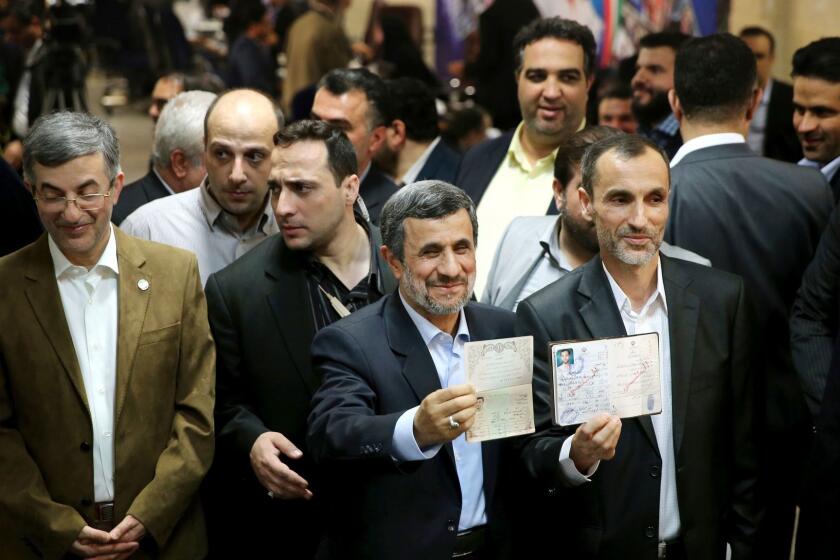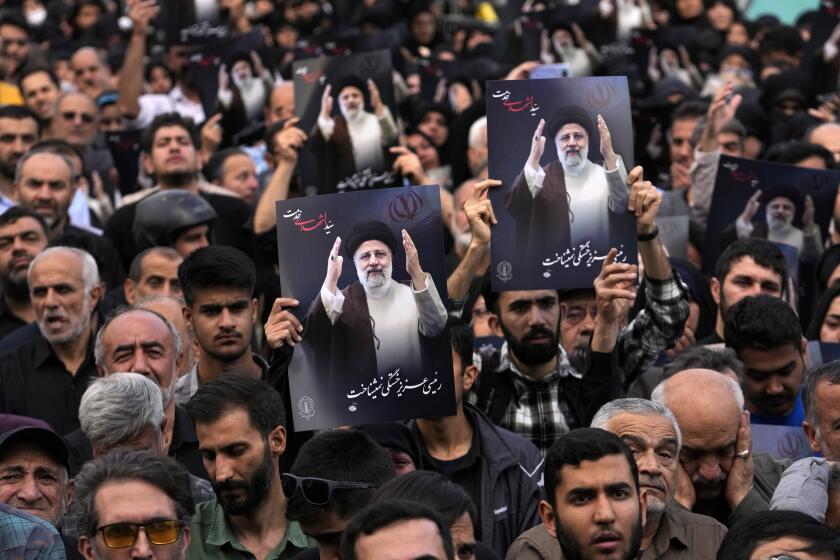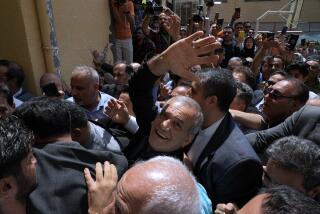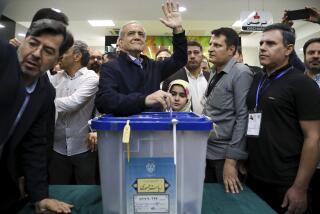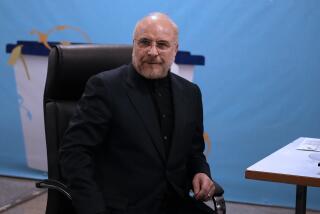Iran’s hard-line former President Mahmoud Ahmadinejad registers for presidential election
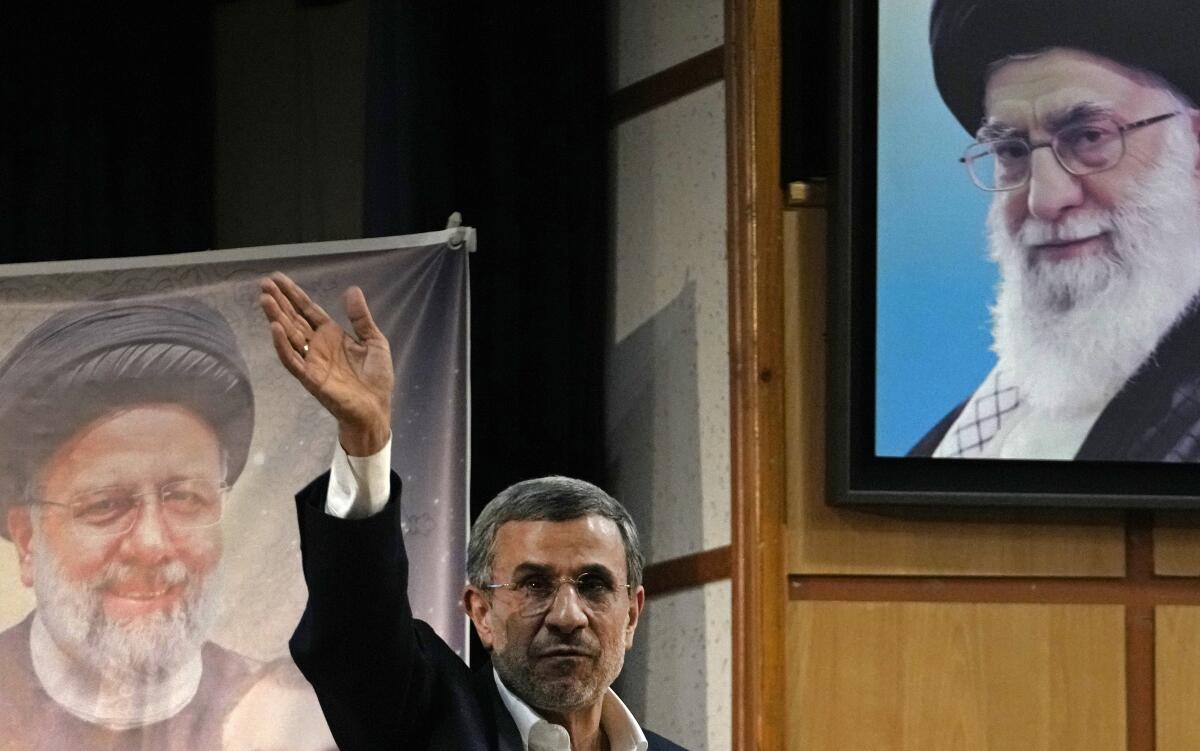
- Share via
DUBAI — Iran’s hard-line former President Mahmoud Ahmadinejad registered Sunday as a possible candidate for the presidential election, seeking to regain the country’s top political position after a helicopter crash killed the nation’s president.
The populist former leader’s registration puts pressure on Supreme Leader Ayatollah Ali Khamenei. In office, Ahmadinejad openly challenged the 85-year-old cleric, and his attempt to run in 2021 was barred by authorities.
The firebrand, Holocaust-questioning politician’s return comes at a time of heightened tensions between Iran and the West over Tehran’s rapidly advancing nuclear program, its arming of Russia in its war on Ukraine and its wide-reaching crackdowns on dissent. Meanwhile, Iran’s support of militia proxy forces throughout the wider Mideast have been in increased focus as Yemen’s Houthi rebels attack ships in the Red Sea over the Israel-Hamas war in the Gaza Strip.
Ahmadinejad is the most prominent candidate to register so far. Speaking after his registration, he vowed to seek “constructive engagement” with the world and improved economic relations with all nations.
“The economic, political, cultural and security problems are beyond the situation in 2013,” Ahmadinejad said, referring to the year he left the presidency after two terms.
Defying Iran’s supreme leader, the confrontational former President Mahmoud Ahmadinejad filed papers Wednesday to contest next month’s elections, a long-shot bid to regain his post that stunned even veteran political observers.
After speaking to journalists in front of a bank of 50-odd microphones, Ahmadinejad said, his finger in the air: “Long live the spring, long live Iran!”
Before his arrival at Iran’s Interior Ministry, his supporters chanted and waved Iranian flags. They quickly surrounded Ahmadinejad, 67, shouting: “God is the greatest!”
He descended the stairs at the ministry, showing his passport as is custom to dozens of photographers and video journalists on hand for the registration process. As a woman processed his candidacy, he sat, turned to the journalists, nodding and smiling for the cameras. He was expected to give remarks after concluding his registration.
An election is planned June 28 to replace Khamenei’s hard-line protégé President Ebrahim Raisi, who died in a helicopter crash in May along with seven other people.
Former parliament speaker Ali Larijani, a conservative with strong ties to Iran’s former relatively moderate President Hassan Rouhani, has already registered, as has former Iranian Central Bank chief Abdolnasser Hemmati, who also ran in 2021.
With political pressure mounting on Iranian President Hassan Rouhani ahead of elections next year, Tehran has been abuzz with rumors that combative former leader Mahmoud Ahmadinejad was considering a comeback.
Who else will seek to run remains in question. The country’s acting president, Mohammad Mokhber, previously a behind-the-scenes bureaucrat, could be the front-runner because he has already been seen meeting with Khamenei. Also discussed as a possible aspirant is former reformist President Mohammad Khatami, but, as with Ahmadinejad, whether he would be allowed to run is another question.
The five-day registration period will close Tuesday, and the Guardian Council is expected to issue its final list of candidates within 10 days. That will allow for a shortened two-week campaign before the vote in late June.
Ahmadinejad previously served two four-year terms from 2005-13. Under Iranian law, he became eligible to run again after four years out of office, but he remains a polarizing figure even among fellow hard-liners. His disputed reelection in 2009 sparked massive “Green Movement” protests and a sweeping crackdown in which thousands of people were detained and dozens were killed.
Abroad, he became a caricature of Western perceptions of the Islamic Republic’s worst attribute, questioning the Holocaust, insisting Iran had no gay or lesbian citizens and hinting Iran could build a nuclear weapon if it chose to do so.
Iran has spent decades supporting armed groups and militants in Lebanon, Syria, Iraq, Yemen and Palestinian territories, allowing it to project power.
But Ahmadinejad remains popular among the poor for his populist efforts and home-building programs. Since leaving office, he’s raised his profile via social media and written widely publicized letters to world leaders. He’s also criticized government corruption, though his own administration faced graft allegations and two of his former vice presidents were jailed.
Khamenei warned Ahmadinejad in 2017 that his standing for office again would be a “polarized situation” that would be “harmful for the country.” Khamenei said nothing during Ahmadinejad’s 2021 attempt, when his candidacy was rejected by the 12-member Guardian Council, a panel of clerics and jurists ultimately overseen by Khamenei. That panel has never accepted a woman or anyone calling for radical change to the country’s governance.
That panel could reject Ahmadinejad again. However, the race to replace Raisi has yet to draw a candidate with clear, overwhelming support from Khamenei.
Gambrell writes for the Associated Press. AP writer Nasser Karimi in Tehran contributed to this report.
More to Read
Sign up for Essential California
The most important California stories and recommendations in your inbox every morning.
You may occasionally receive promotional content from the Los Angeles Times.
